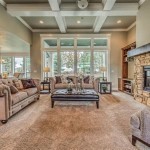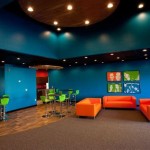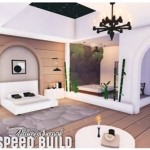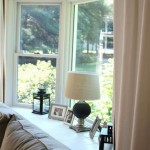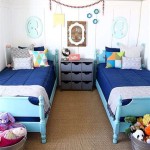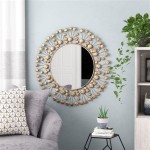Interior Decorating Ideas 2025: Trends Shaping Modern Homes
The world of interior design is constantly evolving, with new trends emerging and influencing the way we decorate our homes. As we approach 2025, several key themes are poised to shape the landscape of interior design. From sustainable materials to personalized spaces, these trends offer exciting opportunities to create stylish and functional living environments.
Embracing Sustainability: Eco-Friendly Materials and Practices
Sustainability is no longer a niche trend; it is a core value driving design choices. In 2025, homeowners will prioritize eco-friendly materials and practices. Natural materials like bamboo, cork, and reclaimed wood will be favored over synthetic options. These materials not only reduce the environmental footprint but also contribute to a sense of warmth and authenticity in the home. Sustainable practices like using energy-efficient lighting, minimizing waste, and opting for locally sourced furniture will become increasingly common.
Personalization and Uniqueness: Reflecting Individual Styles
The era of cookie-cutter interiors is fading. Homeowners are seeking unique and personalized spaces that reflect their individual tastes and lifestyles. This trend translates into eclectic decor, curated collections, and a focus on art and personal mementos. Instead of following mainstream trends, homeowners will embrace individuality and create spaces that tell their story. This could manifest in incorporating vintage finds, showcasing family heirlooms, or incorporating artwork created by local artists.
Functional and Flexible Spaces: Adapting to Changing Needs
The lines between work, leisure, and home life are blurring. Interior design will respond to this shift by prioritizing functional and flexible spaces. Multi-purpose rooms, transformable furniture, and smart home technology will become essential features. For example, a living room might double as a home office, with a sofa that converts into a bed for overnight guests. Smart home systems will enable homeowners to control lighting, temperature, and entertainment systems effortlessly, enhancing comfort and convenience.
The Rise of Biophilic Design: Connecting with Nature
Biophilic design, which incorporates elements of nature into interior spaces, will continue to gain popularity. Homeowners are seeking to reconnect with the natural world and create spaces that promote well-being. This trend manifests in incorporating natural materials, plants, and natural light into the home. Green walls, indoor gardens, and open floor plans that blur the lines between indoors and outdoors are becoming increasingly popular. By bringing the outdoors in, homeowners can create a sense of tranquility and improve air quality.
Technological Integration: Enhancing Comfort and Convenience
Technology will seamlessly integrate into the home environment, enhancing comfort and convenience. Smart home devices, voice assistants, and automated systems will simplify everyday tasks and create a more connected living experience. For example, voice-activated lighting can set the mood for different activities, while smart thermostats optimize energy efficiency. Integrated entertainment systems will allow for a personalized and immersive experience. The focus will be on technologies that enhance the quality of life, rather than simply adding gadgets.
The Importance of Color Psychology: Creating Moods and Ambiance
Color psychology is playing an increasingly important role in interior design. Homeowners are becoming more aware of the impact colors can have on mood and ambiance. Warm colors like reds, oranges, and yellows can create a sense of energy and excitement, while cool colors like blues, greens, and purples promote relaxation and tranquility. The use of color will be strategic, with each shade carefully chosen to enhance the desired mood of a particular space. For example, a bright yellow might be used in a kitchen to stimulate appetite, while a calming blue might be used in a bedroom to promote restful sleep.
Minimalism with a Twist: Cultivating Simplicity and Functionality
Minimalism has gained widespread popularity in recent years, but it's evolving in 2025. While embracing simplicity, homeowners are adding a touch of personality and warmth to their minimalist spaces. Instead of stark, minimalist designs, the focus will be on carefully curated furniture and accessories that add visual interest while maintaining a sense of order. This approach allows homeowners to create spaces that are both stylish and functional.
As we move into 2025, interior design trends will continue to evolve, embracing the changing needs and desires of homeowners. By blending sustainability, personalization, functionality, and technology, interior design will become a powerful tool for creating spaces that are both beautiful and meaningful.

20 Interior Design Trends 2025 Must Have Looks You Ll Love Decorilla

20 Interior Design Trends 2025 Must Have Looks You Ll Love Decorilla

20 Interior Design Trends 2025 Must Have Looks You Ll Love Decorilla

20 Interior Design Trends 2025 Must Have Looks You Ll Love Decorilla

2025 Top Interior Design Trends Designed

20 Interior Design Trends 2025 Must Have Looks You Ll Love Decorilla

2025 Interior Design Trends And Home Decor Ideas You Will Love Jane At

What S Hot In Home Decor 2025 Buy Wall Art

2025 Interior Design Trends And Home Decor Ideas You Will Love Jane At

2025 Vision 30 Home Design Trends And Decor Ideas Unveiled
Related Posts
